How much does it cost to raise a child in japan
The Cost of Children in Japan
We had an interesting question from a reader a couple of weeks ago. They wanted to know if raising children in Japan really cost 30 million yen per child. Let’s take a look at that number and where it comes from (and if it is true!).
30 million yen to raise a child?
The first thing is that any average number is not going to work for everyone (or even anyone?). Much like the government’s ‘people will need an extra 20 million in retirement to supplement nenkin‘ numbers, it is much better to think about your own situation and try to calculate your own numbers.
The linked article uses the same kind of numbers that financial planners pull up: averages based on assumptions. A lot of that 30 million is based on optional educational expenses: private schools, extracurricular activities (習い事), cram schools, and university.
The real numbers
It’s definitely possible to raise a child for a lot less if you choose not to pay for these things. After all, housing and food costs do not increase linearly with each extra person (it’s a lot cheaper per person with two, three, four people) and it is very much possible to have fun and do well academically without paying for extra classes. In fact, some of the best students I have met did not go to cram school but rather studied by themselves or with their parents.
The curse of internationalism
On the other hand, particularly for international families, it is possible to spend a lot more. Family trips abroad with children do scale linearly, and taking the family back to Europe for a couple of weeks in the summer can often cost as much as a small car 🙁
My kids also went to study abroad a few times, which can also be extremely expensive.
Selective spending
However, when they went to university they got loans, so we only had to cover the entrance fees and living expenses (they lived at home and went to local unis).
My wife reckons they cost us about 15 million each, so 45 in total.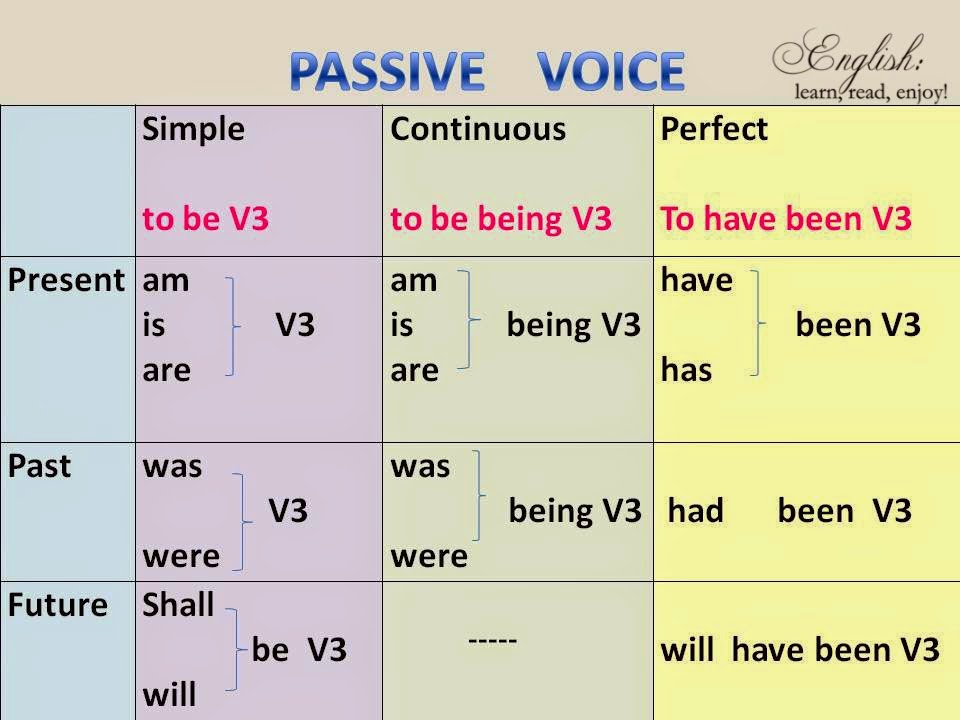 Sadly we didn’t really track this so we don’t have accurate numbers.
Sadly we didn’t really track this so we don’t have accurate numbers.
Where you live is also going to make a huge difference (Tokyo is more expensive than rural Iwate) as will your lifestyle (do both parents work? Are grandparents or other family nearby?).
At the end of the day
So we kind of come full circle: average numbers are not going to work for any given person. The cost of raising children in Japan is probably between a few million yen and tens of millions, depending on what you choose to pay for. As in all personal finance, deliberate spending will be the key: don’t spend money on things you don’t value so you can spend it on the things that do matter.
How to save the money
There was also a supplementary question: where to save the money to pay for kids’ educational expenses?
There are a wide variety of options, and this being Japan of course there are plenty of insurance companies that would love to ‘help’ you with this.
A quick look at kakaku.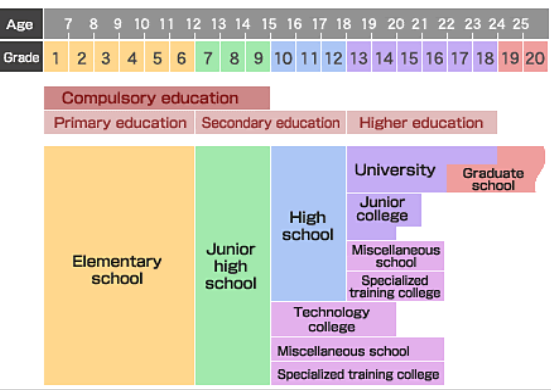 com shows that insurance companies are roughly guaranteeing a 100% return over 22 years. This is a bit underwhelming, but they also include life insurance against the parent, etc.
com shows that insurance companies are roughly guaranteeing a 100% return over 22 years. This is a bit underwhelming, but they also include life insurance against the parent, etc.
Personally I would be inclined to have the parents invest normally using NISA accounts, taxable investment accounts, and cash savings. That way they have the money and there is no restriction on how it is spent or when it can be used. If a family has a lot of extra funds, they could also invest in a Junior NISA account in the child’s name (this money would be tied up until the child is 18 though). Don’t neglect to consider student loans too -you can always help with paying them off in the future if you choose to, whereas if you just pay for everything in advance you lose the element of choice.
How about you? How much do you think raising a child costs in Japan? Any good ideas for how to save/invest for educational expenses?
A Brief but In-depth Look at the Cost of Childcare in Japan
Parenting has been one of the most crucial roles in societies since time immemorial. Taking into account its cost, one may ask, considering the high living standards of Japan, what does it cost to raise a child? Here is some useful information related to child-rearing expenses in Japan.
Taking into account its cost, one may ask, considering the high living standards of Japan, what does it cost to raise a child? Here is some useful information related to child-rearing expenses in Japan.
Table of Contents
- Investing in your child’s future
- Childcare expenses in Japan
- Primary and Secondary Education and on
- Childcare programs by the government
- Summary
One of the most challenging daily activities involves caring for children and bringing them up to become mature, well-rounded and responsible individuals. It is, however, an investment worth a lifetime of rewards and pride for the family and the community.
Whereas families had comfortably managed to survive and attain domestic stability on a single-income financial source previously, today, it’s not uncommon for both parents to work, and sometimes even a double-income source may still not suffice to support a large family.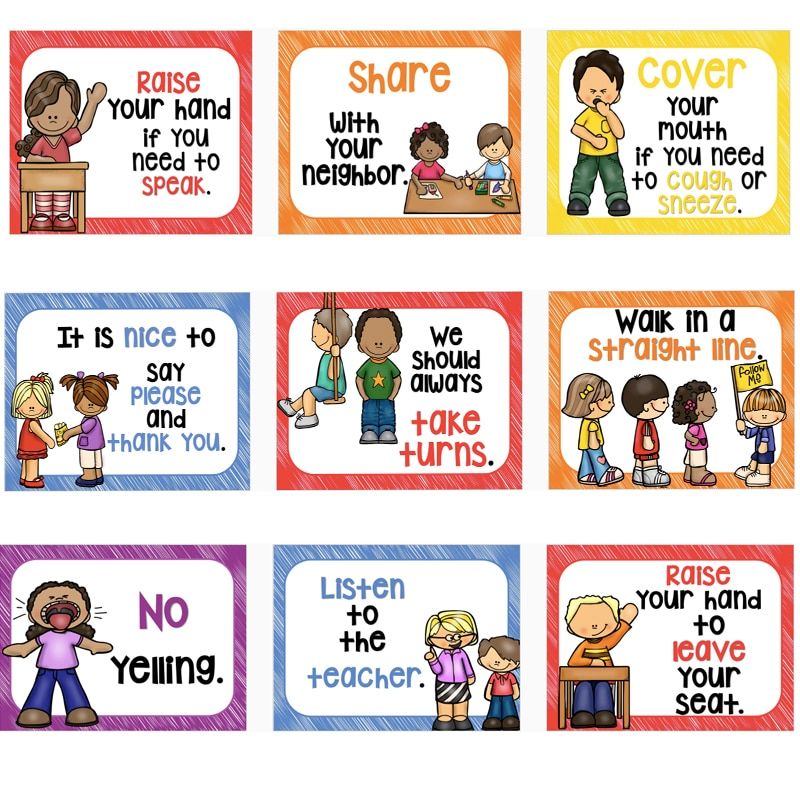 Wise parenting in the modern setting requires families to either acquire insurance or to lay aside cash savings, apart from the practice of minimizing unnecessary expenses, such as foreign travels or buying luxury items and branded gadgets.
Wise parenting in the modern setting requires families to either acquire insurance or to lay aside cash savings, apart from the practice of minimizing unnecessary expenses, such as foreign travels or buying luxury items and branded gadgets.
Childcare in Modern Day Japan
With the changing social and economic landscape, the home scene also became transformed to such that both parents today have to leave infants and growing children with their own parents or other relatives to care for them while the parents earn a living. Daycare centers have also become a thriving specialty enterprise before the turn of the 21st century.
The decline of the size of the family as a social unit has grown more rapidly in Japan within recent years, a trend that began to be felt. There were over 16 million children from 0-14 years old in 2018, covering only 12 percent of the overall population, a record-breaking decrease from previous years. This is a sharp decrease for almost 12 consecutive years and a continuous decline since 1993.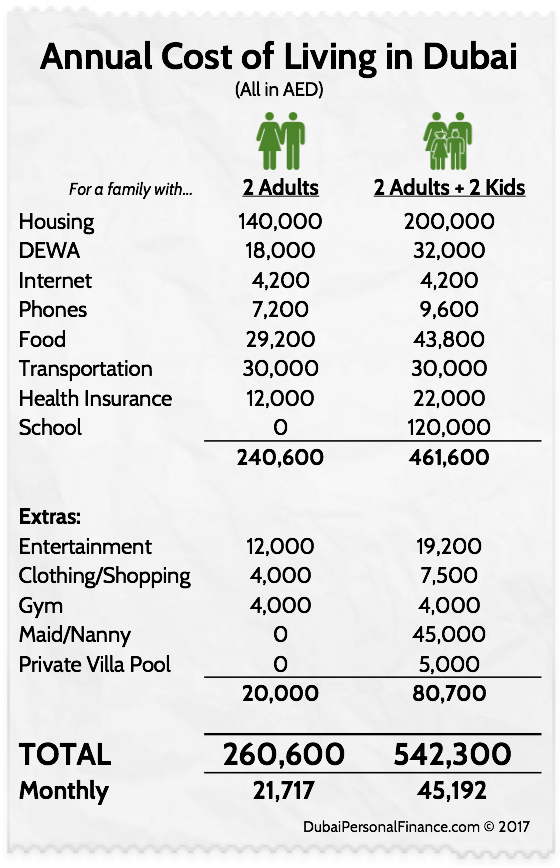 The changing demographics required new costs, instituting reforms and providing assistance to families in order for them to cope with the burden of caring for children and providing sustenance and proper education as they mature. We will highlight some of them here in this article.
The changing demographics required new costs, instituting reforms and providing assistance to families in order for them to cope with the burden of caring for children and providing sustenance and proper education as they mature. We will highlight some of them here in this article.
※ Statistics Bureau of Japan, "Statistical Handbook of Japan 2019," p.15
Writer's Pick
Figures on bringing up a child in Tokyo from giving birth to graduating from college averages from about 29 million yen to over 60 million yen. Within that total, living expenses could reach as high as 16.4 million yen. The lower rates are those who opt to send their children to public schools, while private education can make the difference of 30 million yen in total child-rearing expenses, especially if they pursue medical studies. These numbers are based on a survey done in 2005, still heavily utilized by many to provide figures for current child-rearing expenses - however, costs may have fluctuated since then.
※ Cabinet Public Relations Office, "子育て(教育)費負担問題と教育(修学)支援制度の整備・充実の課題"
Childcare begins with maternal care, as the expectant woman must begin the arduous task of maintaining her physical, psychological and biological health through proper diet and rest. Many developed countries such as Japan have high costs of childbirth, where prenatal care can run-up to an average of 5,000 to 10,000 yen per visit. Hence, over the whole pregnancy period, somewhere between 50,000 to 150,000 yen will be paid for 10 to a dozen visits to the gynecologist. Hospital expenses and delivery costs may raise the expense up to 1,000,000 yen or more. However, discounts are offered.
※ Japan Healthcare Info, "How much?"
Japanese mothers prefer to take care of their own children, instead of letting others do it, unless nearby relatives, such as grandmothers can take time off to babysit while the mother does errands. Those who can afford the expense employ trained nannies to look over the children, although this practice isn’t too common.
Unlike in western countries, Japanese families rarely hire babysitters, who may charge around 2,500 yen per hour for every child for a minimum of 3 hours. These babysitters are often resorted to only during emergencies, as rates are high especially on weekends and National holidays in Japan.
※ Babysitters, "Price"
Day-care and pre-elementary school facilities and education
Daycare centers, on the other hand, are relied on to oversee pre-school children of working Japanese couples. Those who wish to avail themselves of these services must apply through local government offices for a slot or to private daycares within the area. However, it’s often said that competition is quite fierce for these slots, especially in the city, and waiting lists can be quite long. Food is served to children in these centers, where they will take naps and stay in the center from around 9:00 am to 6:00 pm, depending on the parents’ needs.
Kindergartens provide learning opportunities for children. Parents may apply directly to the schools. Children often bring their own lunch, naps are seldom included and the children stay till 2:00pm or 3:00pm.
Parents may apply directly to the schools. Children often bring their own lunch, naps are seldom included and the children stay till 2:00pm or 3:00pm.
Companies sometimes provide day care for their employees through in-house centers. All these facilities, while allowing freedom and flexibility for parents, also allow children to gain valuable social and academic skills and to prepare for their life as adolescents and adults.
Daycare and Kindergarten fees depend on the parents annual income and some may range from 20,000 to 80,000 yen monthly, depending on location and the type of facility (public or private). The average costs for public kindergartens would be around 223,500 yen per year, and around 528,000 per year for private ones. The calculation, found by survey in 2018, is inclusive of tuition, and lunch fees, as well as extra curricular activities.
※ Japan Healthcare Info, "Daycare, Nursery and Kindergarten" ※ Ministry of Education, Culture, Sports, Science and Technology, "平成30年度子供の学習費調査の結果について," p.1
Elementary students often spend time with their friends playing in playgrounds after school while most middle school and high school students finish school around 4:00 and have after school club activities. After that, they come home and take a quick break before heading to cram school to catch up on school classes and study for high school or university exams, usually thrice a week from whenever they are done with school to around 10:00pm or on weekends.
Students also often have various after school lessons, such as music (piano is a popular one), art, dance, martial arts, and various sports (baseball, swimming, etc.) or even classes like calligraphy. All these formal and informal studies require additional expenses for the families.
For reference, enrolling a child for primary education in a public school incurs a cost of around 320,000 yen per year, while a private school would be around 1,600,000 yen per year, including said extracurricular activities.
In comparison, high school and university costs also range differently depending on the type of school. The following are estimated costs that one should expect to be incurred in the latter years of the child’s education after primary schooling.
Private schools
-
Junior High School - 1,406,433 yen per year
-
Senior High School - 969,911 yen per year
Public Schools
-
Junior High School - 488,397 yen per year
-
Senior High School - 457,380 yen per year
University costs per year
-
National - 535,800 tuition fee per year + 282,000 enrollment fee
-
Public - 538,734 tuition fee per year + 392,391 enrollment fee
-
Private - 904,146 tuition fee per year + 249,985 enrollment fee
※ WeXpats, "Breakdown of Cost of Primary and Secondary Education in Japan" ※ Ministry of Education, Culture, Sports, Science and Technology, Changes in tuition fees, etc.at national, public and private universities
The government shoulders some of family expenses for Japanese couples planning to raise a family in order to encourage more births, which may include birth allowances of 420,000 yen from federal funds.
According to Japanese laws, expectant mothers are allowed to take a maternity leave 6 weeks prior to delivery and 8 weeks thereafter. They also receive the benefit of getting two thirds of their salary, as long as they have satisfied the required initial payment of the social insurance system for at least two years. They can also take “child-raising leave” after maternity leave until the child turns 1 year old.
※ Ministry of Health, Labour and Welfare, "Overview of Medical Service Regime in Japan," p.6
The Japanese government also provides monthly stipends for every child below 3 years old which amounts to 15,000 yen per month which becomes 10,000 yen monthly when the child reaches 3, for up to two children. From the 3rd child, the stipend after age 3 becomes 15,000 yen per month and for each following child until they reach junior high school, when the allowance drops to only 10,000 yen per month.
From the 3rd child, the stipend after age 3 becomes 15,000 yen per month and for each following child until they reach junior high school, when the allowance drops to only 10,000 yen per month.
※ Ministry of Health, Labour and Welfare, "Scope of coverage for the Child Allowance System will expand"
Health insurance is offered to all residents through the National Health Insurance or through one’s company in the Employees Insurance, which will take monthly deductions from the salary while considering family needs and the number of dependents. Dependents of the insured are also eligible to receive insurance benefits.
With the necessary support for the people and their basic family needs, the Japanese government tries to address all the expenses it would take for child-rearing and tries to ease such concerns for its residents. With its advantages, Japan may be an ideal place to start a family and raise a child.
Why Japanese children never act up
Japan is one of the most amazing countries.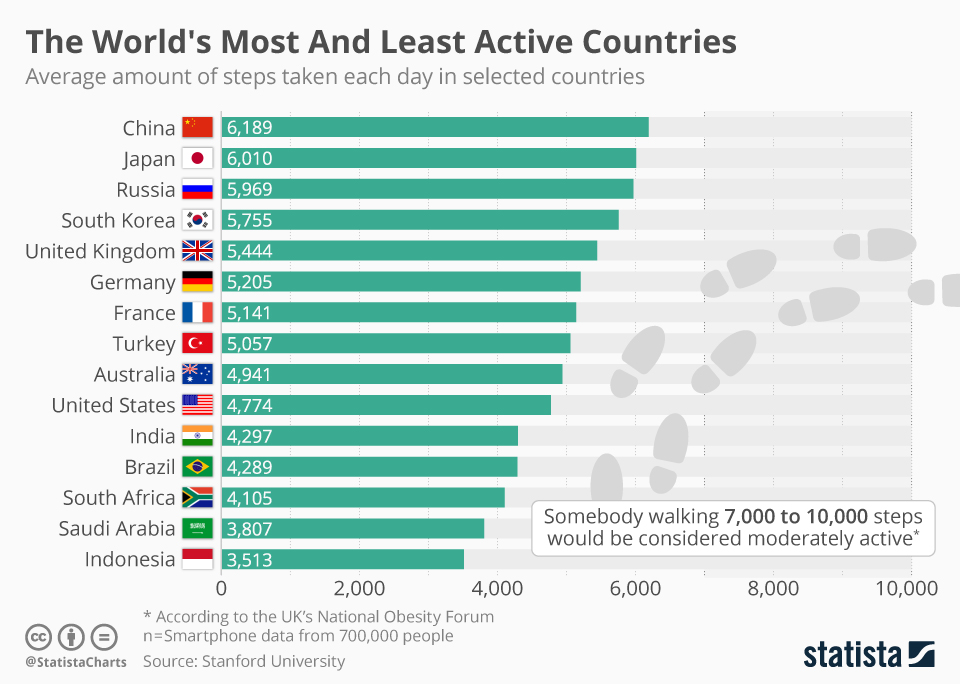 The industriousness of the Japanese, their perseverance, discipline and respect for nature are known all over the world.
The industriousness of the Japanese, their perseverance, discipline and respect for nature are known all over the world.
We suggest paying attention to one more feature of this people, which should be adopted by parents living in any country.
Japanese approach to parenting
People who come to the Land of the Rising Sun are surprised at the extraordinary mutual understanding between different generations of the Japanese. Children are obedient and sweet, adults are adequate, grandparents are loving, but without the usual "lisping" ...
The reason for this unanimity is a special tradition of raising children, the roots of which go back to the distant past.
Many centuries ago, Japanese mothers combined work with raising children. But there were no kindergartens or stay-at-home grandmothers to leave a child with until the work day was over. Therefore, the baby was always in the same place as his mother. Even if the woman walked into the field, she wrapped the child around her with a cloth. At the same time, she constantly communicated with the baby, told what she was doing and why. Not surprisingly, the child learned to talk faster than to walk.
At the same time, she constantly communicated with the baby, told what she was doing and why. Not surprisingly, the child learned to talk faster than to walk.
What does this approach do?
The kid feels involved in all life processes (work, rest, walks), it is easier for him to develop and learn about the world.
It is not surprising that even now Japanese women prefer to raise children according to this tradition. Wherever mom goes, no matter what she does, the baby is always next to her - in her arms, behind her back, or slowly walks with her by the hand.
Usually Japanese mothers stay at home until the child is 3 years old. Although there are nurseries in the country, it is considered shameful to send a baby to them. However, as well as asking to sit with the child of grandparents. After the baby celebrates his third birthday, he is sent to kindergarten.
Both at home and in the garden, the child is taught to pay attention to feelings - not only to his own, but also to other people, animals, and even inanimate objects. For example, if the baby hits the car on the floor and breaks it, the mother will not take the toy away, but will definitely report that the child hurts the car. Do not think that raising a child falls entirely on the shoulders of a woman. Their dads are willing to babysit with kids.
For example, if the baby hits the car on the floor and breaks it, the mother will not take the toy away, but will definitely report that the child hurts the car. Do not think that raising a child falls entirely on the shoulders of a woman. Their dads are willing to babysit with kids.
Japanese parenting rules
As already mentioned, in Japan, children receive a lot of parental attention - hugs, conversations, joint walks, etc.
At the same time, moms and dads never:
- do not raise their voice;
- do not read notations;
- do not use corporal punishment.
The Japanese teach children:
- be polite;
- be considerate of others;
- do not disturb anyone with your behavior.
What do the Japanese do when a child misbehaves?
It is natural that parents are interested, but how do you get a child to stop indulging? The Japanese do not shout, do not punish, so how do they motivate the baby to behave correctly? The answer is simple - they show their dissatisfaction with intonations and glances.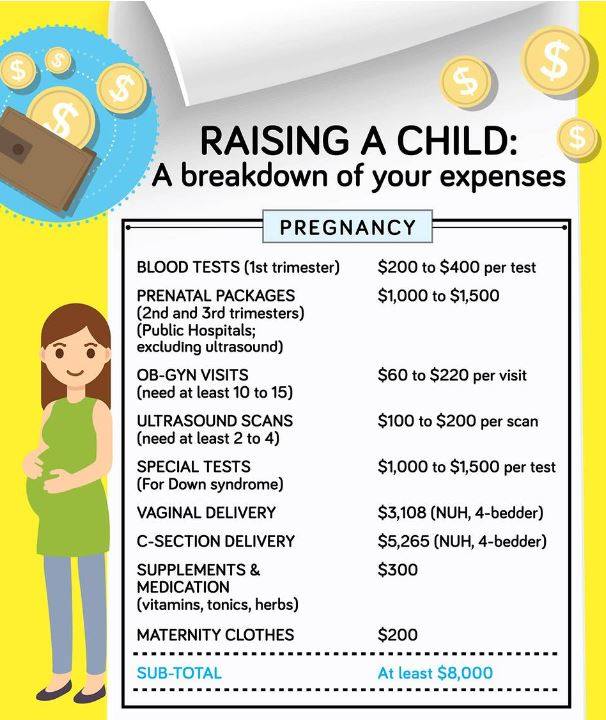
Japanese children unmistakably recognize when their parents are upset by their behavior, feel guilt and remorse, and try to improve.
As you can see, in Japan, children are bathed in love and care from their parents, and from the very birth they learn the principles of life in society. Of course, this system of education is very unusual for residents of other countries. But the experience of hundreds of years shows that it is incredibly effective and helps to grow law-abiding, well-mannered and pleasant citizens.
This article is for informational purposes only.
LLC "Innovative Technologies" thanks you for
that you took the time to read this information.
how much does it cost to move and live in Japan
In 2007, I was in Japan for the first time, and a week later I met my future husband there.
Julia Dudova-Tsunoda
lives in Tokyo
Immediately after moving to Tokyo, my husband said that now I have to figure out how to become a part of Japanese society, he will not help me - this is not Japanese.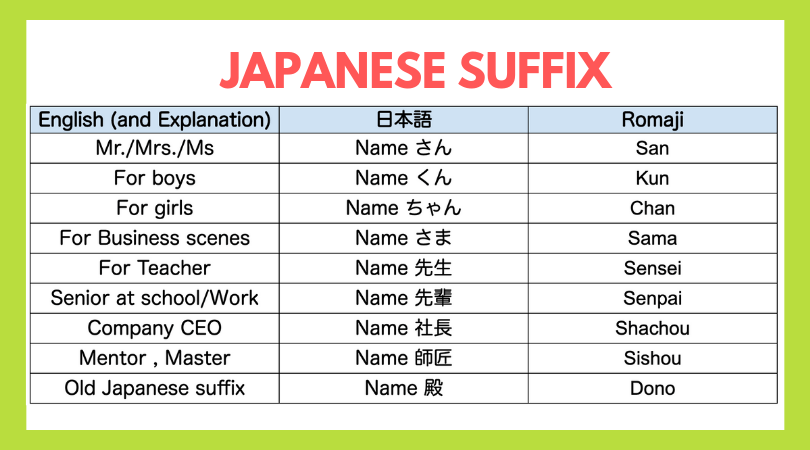
I will tell you what I learned about Japan during my 10 years of living in Tokyo.
Moving
My first trip to Japan was for tourism. Then I lived in Khabarovsk and a friend invited me to visit her in Tokyo, she also helped to draw up the documents. Now it is much easier to get a Japanese visa, it is free, and most importantly, you do not need to look for a guarantor in Japan. If you are traveling for the second time, you can apply for a multiple-entry visa for 3 years at once. About how to collect all the necessary documents and go to Japan as a tourist, in T-F have already been written in detail.
It took me a whole year to be back in Tokyo. When I returned to Khabarovsk, my future husband sent me an invitation for a new visa. In this document, I was listed as his bride. With these papers, I went to the Japanese consulate, but without explanation they denied me a visa with a ban on repeated applications for six months.
Then my future husband came to Khabarovsk himself to talk to the consul in person. He advised him to go to the Tokyo municipality and marry me without my participation, so that after that I could be given a wife's visa.
/khabarovsk/
How much does life cost in Khabarovsk? But I was able to safely enter Japan already in the status of the wife of a Japanese.
Many parts of Tokyo consist entirely of low buildings and narrow streets. Even Tokyo natives easily get lost in this endless mazeResidence permit
The Japanese wife's visa immediately gave me a certain freedom: in this status, I could work wherever I wanted. You cannot work with a regular tourist visa in Japan. And a work visa is opened only for a certain type of activity, such as journalism or tourism.
If you have lived in Japan for a long time, do not break the law and officially work, you can get the status of a permanent resident - here it is called "eijuken". To do this, specialists in professions required for the country, as well as spouses of Japanese citizens, must continuously live in the country for 1-5 years. All other categories of applicants - from 10 years.
All other categories of applicants - from 10 years.
Foreigners with experience in R&D, IT, transportation, gastronomy and entertainment are welcome here
Eijuken is given for life, it does not need to be renewed. With it, a foreigner gets almost the same rights as the Japanese: they can engage in any paid activity, take loans, ask for financial assistance to open their business, invite guests from abroad. You can even divorce your Japanese spouse and marry another foreigner without losing the right to legally reside in Japan.
But if you decide to leave the country for more than a year, you will have to obtain special permission to return. It will indicate the date by which you must definitely come to Japan again, otherwise the eijuken will burn.
You can also go through naturalization - that is, to take Japanese citizenship. In this case, you will have to refuse the passport of another country. To start the naturalization process, you need to live in Japan continuously for 5 years, and for those who are married to the Japanese - 3 years.
I do not plan to obtain Japanese citizenship yet, because I often travel to Moscow. Stateless RF I would have to apply for a Russian visa every time, and this is another test.
My resident card indicating the type of visa and address of residence - here, too, everyone must have a residence permit. The card is used as an identity card: in Japan, as in the USA, passports are needed only for trips abroadLanguage
I started learning Japanese back in Russia from books. Once in Japan, I realized that I couldn’t cope here alone and I needed to go to courses. A month of training costs 30,000-50,000 ¥ (18,000-30,000 R) plus 100,000 JPY (60,000 R) - an entrance fee. But after a year of classes, I could already calmly communicate and pass interviews.
¥100,000
entrance fee for Japanese language courses
In Tokyo, you can at the very least live with only English. There are a lot of foreign tourists here, so the signs are duplicated in English, restaurants and cafes have an English menu, and in banks, hospitals and government agencies, at least someone will be able to communicate with you in this language.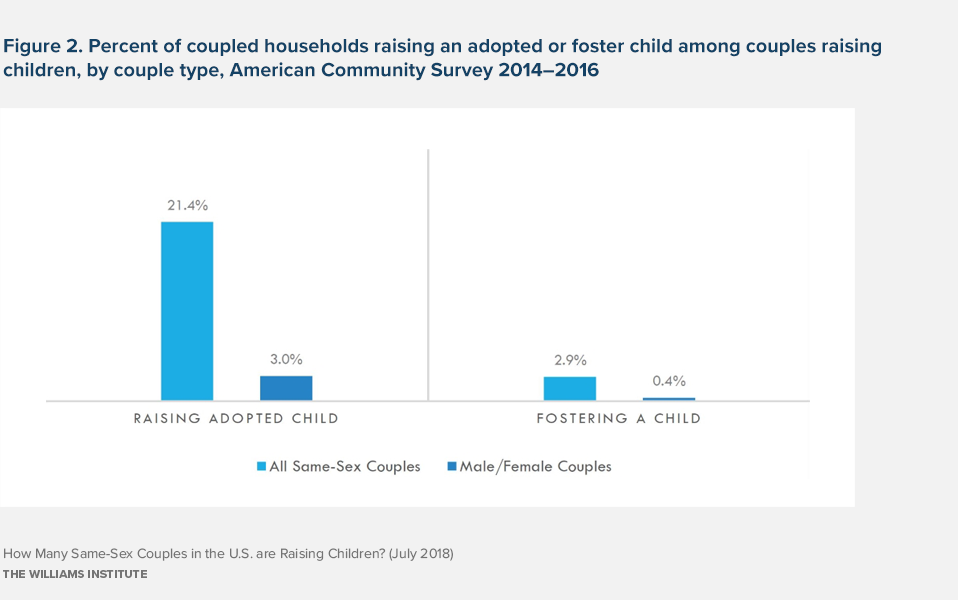
The problem is that for the Japanese, English is a phonetically very complex language. For example, they do not have the sound “l” in their language and it is automatically replaced by “r”. Because of this, many Japanese, especially the older generation, distort English in such a way that you have to literally guess their words like a cipher. For example, “sarada” is salad (salad), “syava” is shower (shower), and “ea” is air (air).
All announcements are duplicated in EnglishWork and salary
Work for the Japanese is the meaning of life. If you are not dead, then you should be at work. Your colleagues are your family. Whatever they are, you can't get away from them.
No one leaves the office at exactly six: everyone is waiting for the boss to finish the work. But even then, just going home won’t work: often the boss calls everyone in karaoke to “let off steam”. You can't refuse. If you do this, you will move away from the team, which means you will put yourself above others, which means you have something in mind, which means you cannot be trusted.
It is especially difficult for women to work in such conditions, because they are fully responsible for the care of children and comfort in the house. Housemaids, nannies and other au pairs are not accepted in Japan: it is believed that a wife should do everything herself - this is her duty to her husband. Therefore, Japanese women either work only until marriage, or sacrifice their family for the sake of a career.
Office buildings in Tokyo's Ginza Most Japanese women choose to have a family, so on average they get paid one third less than men. The employer is in no hurry to promote them, knowing that after the birth of children, they most likely will not return to work. Because of this, many women work here without permanent employment. They are called "arubaito" - from the German arbeiter (worker, unskilled worker). They can be hired and fired at any time, they can not be paid extra for seniority, limited only to the minimum rate per hour - in Tokyo in 2018 it was 985 JPY (620 R).
But in parallel with this, in Japan there is still a system of lifetime employment, which has come down to us from the era of samurai, who from childhood could serve only one master. Today, such people are called "sarari-man" - from the English salary (salary, salary) and man (person).
In 2017, out of 126.7 million Japanese, 65.3 million were of working age. Of these, 13 million are sarari mana. Their greatest concentration is precisely in Tokyo, because the capital accounts for a tenth of Japan's entire labor force, half of the financial capital and people with higher education.
Distribution of the population by occupation, in English
Sarari-mans are employees of numerous Japanese corporations with permanent contracts, high salaries, monthly bonuses, vacation pay, and other bonuses from the company. In return, they are required to do three things: not to shirk, not to be zealous, and to do what they say. And then, no matter how mediocre a person works, he will never be fired. But no matter how bright abilities he possesses, he almost does not shine with rapid promotion and salary growth.
But no matter how bright abilities he possesses, he almost does not shine with rapid promotion and salary growth.
A sarari-man's salary depends only on years of service. A young specialist who has just graduated from the university receives 160,000-250,000 ¥ (96,000-150,000 R) per month. For the next 5 years, he and all his colleagues of the same age will receive the same amount. When this period passes, their salary will increase slightly and will remain at the same level for the next 5 years - until the next cut-off is reached.
The average salary of young professionals in Tokyo, in English
On the one hand, this allows you to plan for a very long term. You can calculate exactly how much money you will receive over the next 10 years. This makes it much easier to make informed financial decisions, such as saving for educating your kids or buying a house.
On the other hand, people are forced to work in one place all their lives. And the longer you spent in one company, the less likely it is to find a position comparable in status and salary somewhere else. In a new place, your social capital will be reset to zero, and no one will give you a second chance. Therefore, in Japan, no one argues with the boss, does not throw a letter of resignation in his face and follows any, sometimes even the most crazy instructions.
In a new place, your social capital will be reset to zero, and no one will give you a second chance. Therefore, in Japan, no one argues with the boss, does not throw a letter of resignation in his face and follows any, sometimes even the most crazy instructions.
Taxes
According to statistics for 2018, each employed Japanese earned an average of 317,000 JPY (200,000 R) per month. This amount is much more modest for me, because I am a freelance tourist guide. In a year, I get a little less than 1,100,000 JPY (700,000 R), so I absolutely legally do not pay taxes. My husband makes all the contributions for me: he simply indicates that I am a dependent and pays my pension and insurance contributions.
2018 Japanese Statistical Information Guide, English
Progressive scale applies here Personal Income Tax . For those who earn up to 1,950,000 JPY (1,230,000 R) per year, the rate is 5%, for those who have an income above 40,000,000 JPY (25,000,000 R) - 45%.
All types of taxes in Japan, in English
There is a consumption tax - an analogue of the Russian VAT . For a long time it was 5%, but in 2014 it was raised to 8%. Rumor has it that in October 2019it will increase to 10%. Usually, price tags in stores show the cost without this tax in large quantities, and the full amount is signed somewhere with the edge in small print. At first I did not know this and I was surprised that the price at the checkout turned out to be more than I expected.
The Japanese are a very law-abiding nation, so the state has no problems with tax collection. But those who do not pay may be denied access to some state or municipal services. For example, they will refuse to register a marriage with a foreigner, they will not issue a loan, or they will not rent an apartment in a good area. They may not even be accepted into a fitness club - they will say that they are an unreliable person.
Money
The Japanese are very conservative. They love everything paper, so they are still much more happy to send a postcard than an email or a message in a messenger. Because of this, many are not very friendly with computers and other modern technologies.
They love everything paper, so they are still much more happy to send a postcard than an email or a message in a messenger. Because of this, many are not very friendly with computers and other modern technologies.
The Minister of Cyber Security of Japan admitted that he does not know how to use a computer - news on the ITAR-TASS website
Apparently, for the same reason, Japan is a country of cash. This is the main payment method here, especially when it comes to small amounts, for example, in a museum, a small cafe or a shop. Almost everywhere you are much more likely to accept a bill of 10,000 ¥ than to pay with a bank card.
It is customary for the Japanese to save money, so an ordinary family saves up to 15% of monthly income. First of all, this is money for a decent old age and education for children. Education in Japan is very expensive. But the more prestigious the university you graduated from, the higher your starting point in the system of lifetime employment, and hence the salary, and all further well-being.
The other part of the savings goes to weddings and funerals, two of the most important events in the life of every Japanese. It is unacceptable to save on them, so all preparations are made well in advance. For example, a rather modest but worthy funeral will cost 1,100,000 JPY (700,000 R). If the client places an order while still alive, he will be given a good discount - 20%.
The national currency of Japan is the yen. At the time of publication, 1 yen cost 60 kopecks, although in banks the rate is usually indicated for 100 ¥ (60 R). Photo: Shutterstock Weddings in Japan are usually held according to traditional rituals that are centuries oldBanks
There are several large banks in Japan: Mizuho, Mitsubishi, Sumitomo, Rezona and Japan Postal Bank. Only some of them have the possibility of servicing via the Internet, and it has appeared recently.
Before that, you had to go to the branch and stand in line. At the same time, banks are open only from 9up to 15 hours on business days, and all transactions must be confirmed with a personal seal.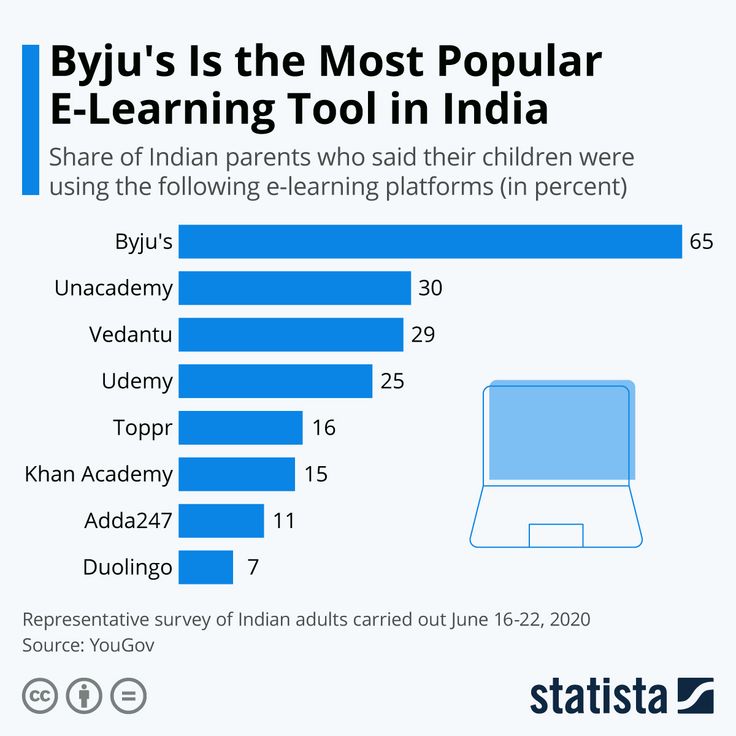
Recently, modern Internet banks, such as Seven Bank, are gaining popularity. It has no branches, and all transactions are carried out via the Internet and a network of ATMs. When opening an account, there is no maintenance fee and there is not even a minimum deposit required, as is the case in most large banks. But even in it, Internet banking is not as developed as in Russia.
For example, to transfer money to another person, you need to fill out a full payment order. There are no transfers by card number, you cannot pay for housing and communal services , a mobile phone or the Internet directly from the application.
The Japanese do not invest free money, but simply bring it to the bank and make a deposit. Moreover, Japanese banks have very low rates - about 0.05% per annum. Therefore, deposits are more like cells where money is simply stored so that no one steals it.
The low rates are due to the fact that Japan has been experiencing deflation for several decades — that is, inflation is reversed: prices do not rise over time, but fall. If in Russia people try to buy a thing on credit, knowing that later it will cost more, the Japanese, on the contrary, put off expensive purchases until the last minute, because prices will still fall over time.
If in Russia people try to buy a thing on credit, knowing that later it will cost more, the Japanese, on the contrary, put off expensive purchases until the last minute, because prices will still fall over time.
How Japan is trying to deal with deflation - an article on the Vedomosti website the country is gradually getting poorer.
A card that allows me to withdraw money from an ATM. Usually, the Japanese do not need anything else from the bank.They practically do not take loans here: it is believed that you need to build your life in such a way that you can always save for necessary purchases in the future. The exception is mortgages and credit cards, which the Japanese actively use. But credit card debt must be fully paid off at the end of each month. Usually, it is automatically debited from the main account before the start of the next billing period.
Opening a credit card is difficult even for Japanese people. It will be done to a foreigner only if he has an eijuken and a significant history of paying taxes in Japan.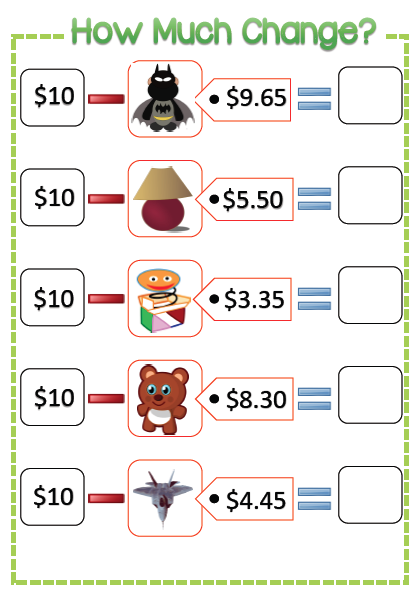 I was able to get a credit card only when I came to the bank with my husband. But I managed to use it for only a few months: one day the bank simply canceled it and told me that it would not open it again.
I was able to get a credit card only when I came to the bank with my husband. But I managed to use it for only a few months: one day the bank simply canceled it and told me that it would not open it again.
0.05%
Japanese bank deposit rate
Pensions
The Japanese live very long. The average life expectancy for men is 84 years, for women - 87. At the same time, Japan is the world leader in the number of centenarians. Many here live to be 110 and even 117 years old. But along with this, the number of children born is steadily declining, which is why the nation has been rapidly aging for many decades.
Even 15 years ago, two sarari-mans with large salaries supported one old man with a pension of 300,000 JPY (189,000 R), which equaled a good salary. Today, there are three elderly people per highly paid worker, and the average pension no longer exceeds 170,000 JPY (107,000 R).
The retirement age for men is 65, for women it is 60.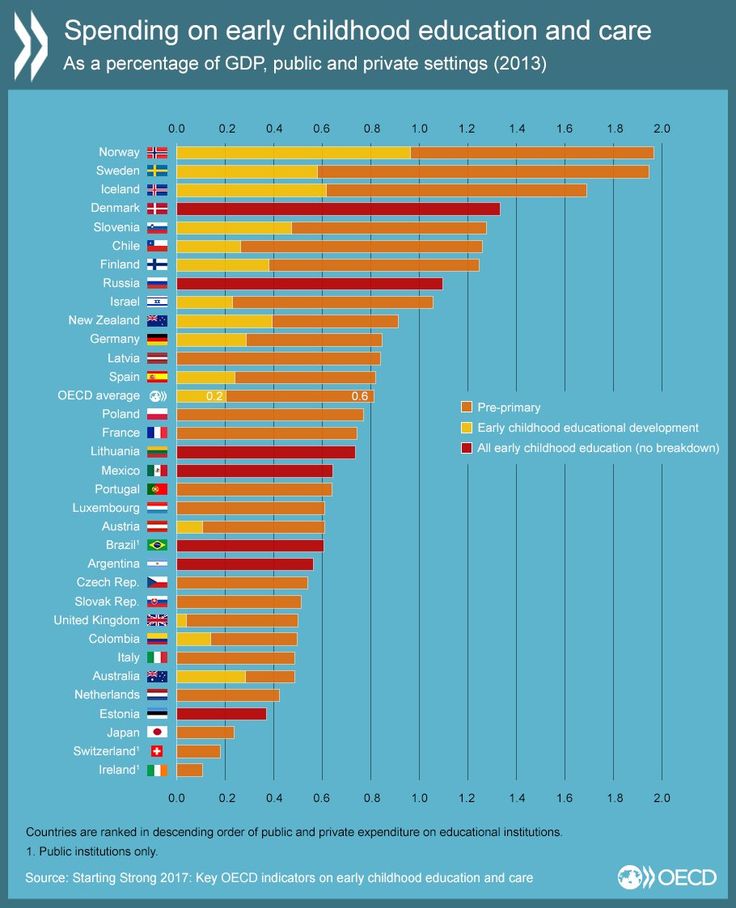 Those who live to be 100 years old receive a one-time payment of 1,000,000 JPY (600,000 R). But even in Japan, it is now very difficult for old people to live on one pension.
Those who live to be 100 years old receive a one-time payment of 1,000,000 JPY (600,000 R). But even in Japan, it is now very difficult for old people to live on one pension.
Housing
The most expensive housing in Japan is both rent and purchase. A small house in the suburbs of Tokyo will cost about 10,000,000 JPY (6,000,000 R). A new house built with modern materials costs around JPY30,000,000 (R19,000,000).
What does a modern Japanese house look like - Melon Panda blog post
Many Japanese women agree to get married only if their spouse has at least JPY 5,000,000 (R3,100,000) in their account in order to immediately buy a house with a mortgage. That's the kind of money the average Japanese can accumulate by the age of 35 if he manages to get into a good firm.
Due to the high cost of land in central Tokyo, houses are narrow and tall. But even so, the areas in them are available only for commercial use Comfortable suburban houses are an hour's drive from the center of Tokyo.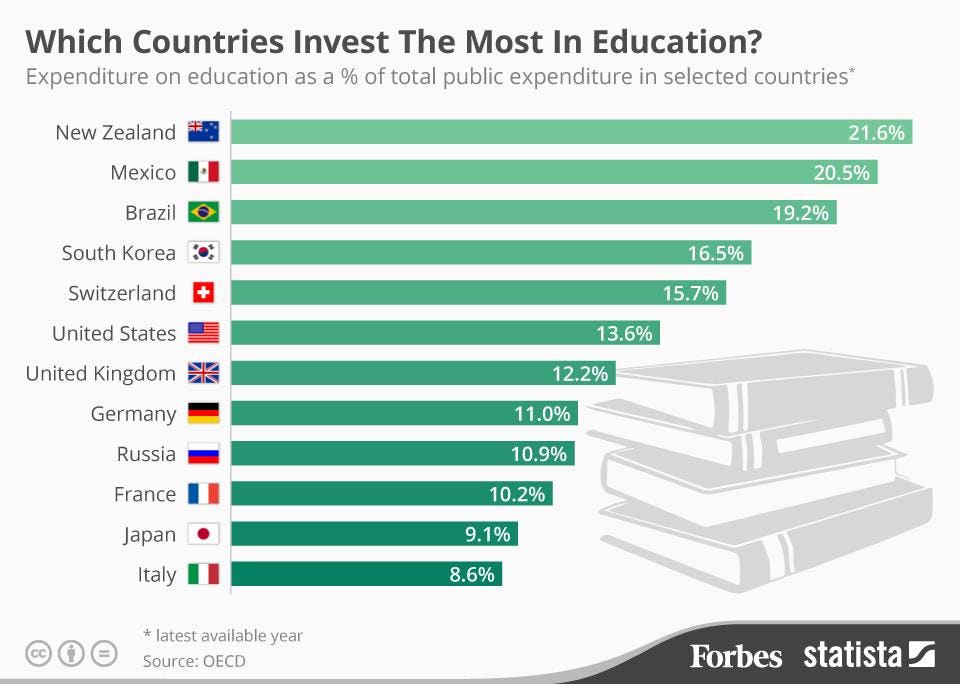 Tokyo residents try not to buy housing closer, because it is expensive, there is not enough space, there is constant noise and bustle. Most Tokyo residents want to live in nature and have a small garden. And the fact that every day they have to spend several hours on the road to work does not bother them.
Tokyo residents try not to buy housing closer, because it is expensive, there is not enough space, there is constant noise and bustle. Most Tokyo residents want to live in nature and have a small garden. And the fact that every day they have to spend several hours on the road to work does not bother them.
Suburban rentals typically cost ¥80,000-90,000 (R50,000-57,000) per month. Apartments are sought through local realtors. They do not like to work with foreigners, and the owners of houses in general can refuse as soon as they find out that the tenant will not be Japanese.
Adding to the complexity is the fact that you will immediately have to pay from 3 to 10 monthly payments for an apartment. In addition to the cost of the rent itself, these are contributions for the key, for not renting the apartment to someone else, a deposit for possible damage - some of them will be returned to you after leaving, the other part is non-refundable.
In every Japanese house, at least one room is covered with tatami mats.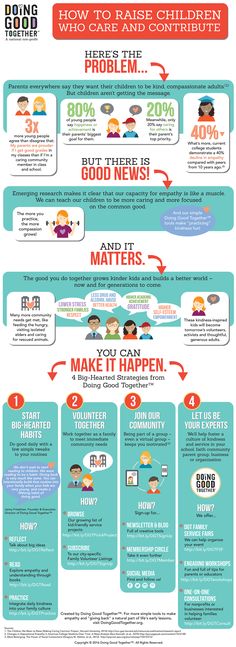 There should be no furniture in it, but you need to sleep on a futon, which is put away in the closet during the day. But I never got over the normal bed
There should be no furniture in it, but you need to sleep on a futon, which is put away in the closet during the day. But I never got over the normal bed . My husband and I live a 20-minute subway ride from the Roppongi area - that is, right in Tokyo itself. But our house is located 2 km from the station, so we are quiet and calm. There is all the necessary infrastructure: two schools, a bank, a post office, a dentistry, a supermarket, a family restaurant, a fish shop, a playground, a football field and a large park.
We have a two-room apartment of 70 m² in a 14-storey building. For rent, we pay 75,000 JPY (47,000 R) monthly - in houses right next to the metro station, this amount is twice as much. Another 30,000 JPY (19,000 R) goes for a communal apartment.
¥30,000
our monthly utility bills
The main expense is electricity. Summer in Tokyo is very hot and humid, so the air conditioner is constantly on at home. You can save 20-30% on electricity only in the off-season - in April and May, as well as in September, when the weather is good and you hardly have to turn on the air conditioner.
You can save 20-30% on electricity only in the off-season - in April and May, as well as in September, when the weather is good and you hardly have to turn on the air conditioner.
In winter, the air conditioner is also constantly on, only now for heating. Most Japanese houses do not have heating, so when it is zero outside, it is +12 °C in the room, and steam comes out of the mouth in the corridor or toilet. The Japanese have long resigned themselves to the fact that there is eternal frost in their homes. Instead of heating the home, they warm themselves with electric blankets and heated tables.
The Arakawa River flows through our area Snow falls once a year in Tokyo. If it does not melt before evening, the city suffers a transport collapse. But at the beginning of spring, cherry blossoms bloom throughout the cityTransport
Tokyo can hardly be called a city in the usual sense. Rather, it is a countless number of small districts, randomly and closely crowded around metro stations.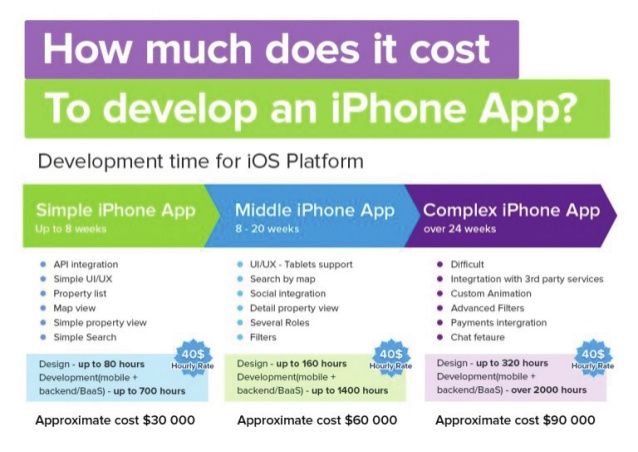
Here the houses do not even have normal addresses: they have numbers, but they are not in order, but reflecting the sequence of land development. And not the houses themselves are numbered, but their groups that form small blocks. Therefore, when Tokyo people make an appointment, they draw a map or throw off the route in the navigator.
A dense network of metro stations permeates the entire city. From one station to another on foot about 25 minutesTokyo has grown so much that officially it is not even a city, but one of Japan's 47 prefectures. The term "Greater Tokyo" is often used - it means the capital itself and several neighboring prefectures, whose residents travel to the center every day to work.
Video: all of Tokyo in 4 minutes
In 2015, the population of Greater Tokyo was 37.2 million. This is more than the number of inhabitants of the entire Asian part of Russia, which occupies 3/4 of the Russian territory and where only about 31 million people live.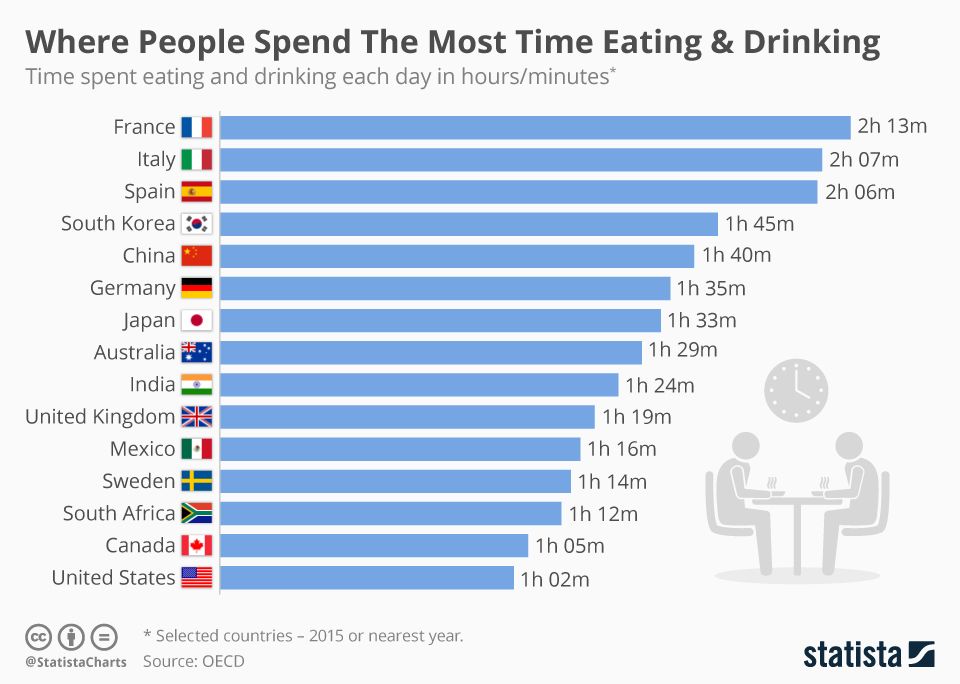
In order for so many people to be able to move daily from home to work and back, the city has an extensive public transport system, which is based on the metro and electric trains. The peculiarity of the Tokyo subway is that it is served by several private companies. Because of this, prices on different metro lines may differ, and in order to transfer from one line to another, sometimes you have to buy a separate ticket.
My fare is 14,000 JPY (9000 R) per month, but I use a transit card. If you just buy tickets every time, about 30,000 JPY can run up in a month (19000 R).
The ticket price is not fixed, but depends on the distance and the number of stations, at least 140 ¥ (85 R) You can pay with a transport card not only in Tokyo, but also in other major cities in Japan. And not only in transport, but also in street vending machines, convenience stores and some chain cafes Tokyo was one of the first to face the problem of giant traffic jams. Here, it was solved by the construction of multi-level road junctions, overpasses and toll high-speed sections. Often they pass by the windows of office and residential buildings somewhere on level 7-9floors.
Often they pass by the windows of office and residential buildings somewhere on level 7-9floors.
After that, traffic jams in Tokyo became much less, but another problem appeared: in order to cross the street or reach a place that is 50 meters away from you, sometimes you need to overcome several kilometers through underground or elevated passages.
Another solution to traffic congestion is to make car ownership as unprofitable as possible. All cars in Japan must meet the strictest environmental standards, and vehicle inspections must be completed twice a year. If you are going to buy a car in Tokyo, you must first show the police a document confirming that you have a place to park it.
90 Р
costs a liter of gasoline in Tokyo
We pay for a parking space near the house 20,000 JPY (13,000 Р) per month. Gasoline costs 10,000 JPY (6,000 R) per month, and 30,000 JPY (19,000 R) per year for technical inspection. The annual car tax is another 54,000 JPY (34,000 R).
The annual car tax is another 54,000 JPY (34,000 R).
Health
The Japanese are very attentive to their health. Many people have industrial gymnastics every day at work. Even the cleaning lady, who keeps the entrance of our house clean, does some exercises every day.
At the same time, it is believed that the human body is a creation of nature, so there is no need to poke around in it once again. I went to the doctor several times, he carefully examined me, but did not prescribe any serious medications, saying only that everything would pass by itself in a week. At first, I even wondered how the Japanese live so long with this approach.
At the same time, the system of early diagnosis and prevention works very well here. Each person at different ages receives special postcards with an invitation to undergo medical examination. For example, at age 40, women are screened for breast, colon, and cervical cancer. Due to this, up to 70% of oncological diseases in Japan are detected at the earliest stage, and up to 90% of early cancers are completely cured.
For example, at age 40, women are screened for breast, colon, and cervical cancer. Due to this, up to 70% of oncological diseases in Japan are detected at the earliest stage, and up to 90% of early cancers are completely cured.
¥0
Children under 15 and people over 65 pay for medical services
All treatment is covered by insurance, but the patient still pays 30% of the price for medical services. The insurance itself is also paid, monthly you need to deduct 5,000–10,000 ¥ (3,000–6,000 R) for it. Your employer contributes the same amount.
Standard insurance does not include non-medical abortions, full body examinations, vaccinations and plastic surgery. You also have to pay for the management of pregnancy and childbirth without complications, usually it costs 330,000-550,000 ¥ (198 000-330 000 R). But large companies offer extended insurance to permanent employees. And children under 15 and people over 65 receive the full range of medical services free of charge.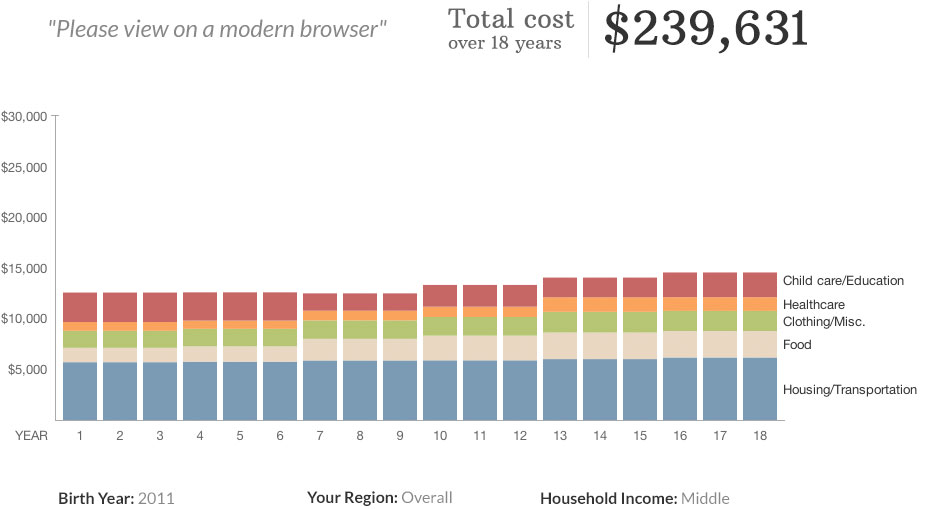
Food
The Japanese love to eat. Sometimes it seems to me that food is their main interest in life, because all the talk is only about it. Travel magazines are offered on flights all over the world. Instead of describing sights, Japanese aircraft magazines say that you can eat at this place.
Unlike everything else, food in Japan is cheap, especially if it's seasonal. It is believed here that the chef's skill is not in the ability to cook dishes exquisitely, but in choosing the most suitable product, which is the best right now. The Japanese do not like frozen food, so the food in the stores is always caught or grown somewhere nearby.
The cost of food in Tokyo, in English
Perishable products are not stored on the shelves. In order to be dismantled on the same day, in the evening, stores make discounts on them. Sashimi, sushi and ready-to-eat lunch boxes after 8 pm can be purchased with up to 50% discount.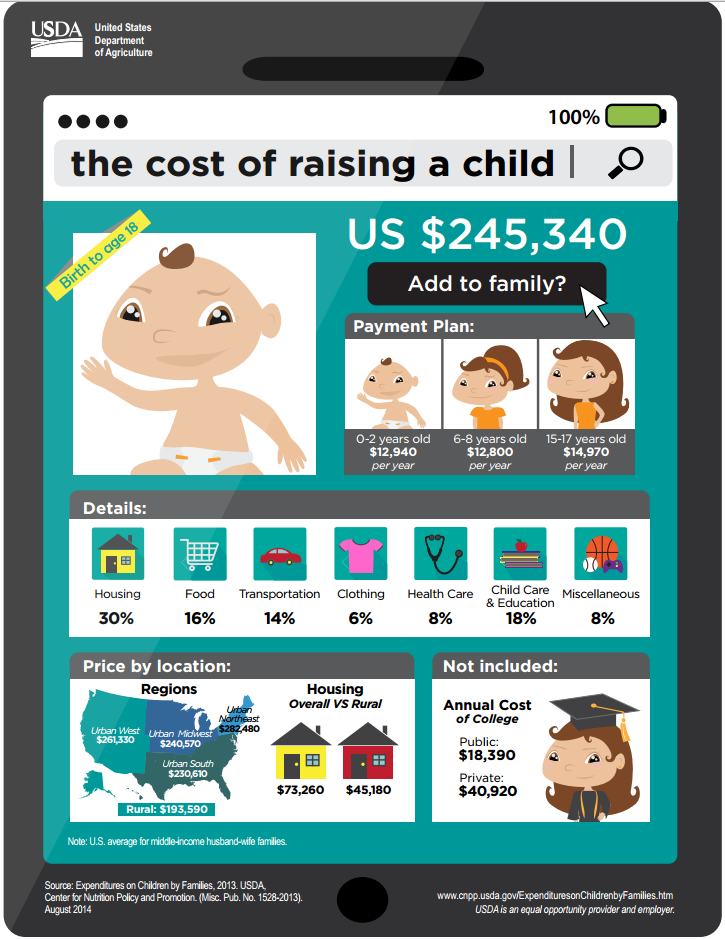
Tokyo is full of places where you can have a quick, tasty and budget meal . There are establishments on almost every corner, each of which specializes in one dish: noodles, rice, fried meat or sushi. Food is prepared non-stop there, so you will have to wait no longer than 5 minutes for your order.
Lunch in most small cafes costs between ¥1000-3000 (R600-1800) excluding drinks. But in any place, water or green tea is poured for free. Even more expensive establishments offer affordable meals at lunchtime - they usually cost around 1500 JPY (950 R).
0 ¥
green tea and water are available in all cafes and restaurants in Tokyo
Also, tipping is not customary in Japan. If you try to do this, the staff will think that you just forgot the money and will run after you to return it.
Entertainment
There are a lot of different types of leisure in Tokyo, I will tell you about the most colorful - but decent ones.
All Japanese try to go to sento at least twice a month - it's like a bathhouse, only people don't warm themselves in a steam room, but sitting in a tank of very hot water. Just the entrance to sento costs 800 JPY (500 R), but usually it is a whole entertainment complex with restaurants, karaoke, massage and spa. There are even comfortable sleeping rooms in which the Japanese rest after all this relaxation.
This is what sento looks like in a suburb of Tokyo. And this is an onsen, they are often confused with sento. Onsen is sento with mineral water from thermal springs. You need to go to the mountains for this, there are no real onsens in Tokyo. Photo: Shutterstock Among the Japanese, calligraphy lessons, ikebana and bonsai are very popular. One lesson costs 1000-2000 ¥ (600-1200 R). It is believed that a truly educated person should have at least a little knowledge of one of these arts.
Every Japanese man has pocket money, approximately 20,000-30,000 ¥ (12,000-18,000 R) monthly, which his wife gives him for Friday and Saturday gatherings with friends in izakaya. These are Japanese bars with a small selection of snacks for beer and other alcohol, which are designed for a maximum of 8-10 people. Usually, the izakaya crowd close to each other, forming entire quarters in which drunken sarari-mans rest after work.
Nature
Tokyo is located at the same latitude as the Côte d'Azur. But strong winds from Siberia bring a lot of cold air and precipitation here. From this, in Japan, all seasons are outlined very clearly and replace each other as if on schedule. Even the first thunderstorm and the first typhoon usually come on a strictly defined day.
Japanese winter is the driest and sunniest time of the year. But then comes the long wet season with exhausting sticky heat and stuffiness. From July to October is the time of heavy rains and typhoons. In 2018, I counted 14 typhoons: most of them are weak or hit the city only marginally, but there were also those that canceled flights and made it impossible to leave the house for several days.
Even in Japan, earthquakes often occur. Small shocks occur almost every day, but they are almost not noticeable. The last strong earthquake with casualties and destruction near Tokyo was in 2011.
The Japanese have long been accustomed to the violence of the elements and are constantly ready for new blows: they go to special courses, conduct drills, disseminate information about actions during natural disasters. Almost every family has a special backpack with the most important documents, money and a supply of food - you can quickly grab it and leave the house during the evacuation.
At the same time, Tokyo is considered to be the safest city in the country in this respect. Usually, major natural disasters happen either to the south or to the north - about twice a year.
| These signs tell you how dangerous the area you are in in case of a tsunami or earthquake | Well, where to run, if anything |
Life among the Japanese
I can't say that during this time I managed to understand the mysterious Japanese soul, but it seems that I was at least able to get rid of a few stereotypes.
Vsevolod Ovchinnikov's book "Sakura Branch" helped me to get to know the Japanese better
The Japanese are very polite. Only after living here for several years, you begin to understand that for them politeness is not at all low bows and respectful courtesy. First of all, the Japanese try to avoid situations that could humiliate anyone in any contacts. To be insulted or behave inappropriately means to permanently ruin your reputation, as they say here - "lose face. " For the Japanese, this is unbearable - hence the high number of suicides.
The Japanese are insincere. Public morality tells them that it is immoral to shift the burden of their emotional problems onto another. Therefore, you have to not only hide your state of mind, but sometimes even express directly opposite feelings. For example, in a conversation with colleagues, a Japanese man, smiling sweetly, may admit that his wife is seriously ill.
Here it is called "face out" - and it should always be friendly neutral. It seems to me that this is why so many Tokyo residents wear medical masks on their faces on the subway - so they can relax at least for a while, hiding their true emotions from millions of people around.
They say the Japanese are from another planet. Their road signs are really strange The Japanese are all the same. Foreign friends who have lived in Japan for a long time joke that if you know at least one Japanese well, you know them all. I used to think so too, but then I found out about "kata". This word here refers to the tradition of performing an action. It is like a regulation for officials, which describes in detail how and what to do.
The whole life of the Japanese consists of thousands and thousands of such kata: how to take chopsticks; as they are; how to properly put them until you eat; where to clean up after eating; how to dress in general; how to put on a certain item of clothing; when to take off your shoes indoors, and when, on the contrary, to put on special slippers for the toilet. There is even a kata for how to enter a room or an elevator and how to ride the subway.
/japan-travel/
How to organize a trip to Japan
At first it shocked me, then amused me, but in the end I got involved myself, realizing how much it makes life easier, saves time and nerves. You don't have to decide what to do every time - just behave as you should and do what you are supposed to do.
The Japanese are hidden perverts. People like to talk about this, remembering all these love hotels, strange nightclubs where customers are tied up and hung from the ceiling, and especially when they learn about the “family rental” service that is now popular in Japan.
Why the Japanese rent relatives - article in The New Yorker, in English
But only when you plunge headlong into the daily life of this country, you learn about the rule "everything has its place." This is such a theory of relativity as applied to morality. The Japanese will never judge the actions and character of a person as a whole. They divide his behavior into isolated areas, each with its own laws and its own moral code.
Instead of dividing actions into right and wrong, the Japanese judge them as right and wrong on a case-by-case basis. Therefore, you can be an exemplary family man and go to the red light district every evening. You can politely bow to a colleague, and then rudely shove strangers into the subway. You can hire a whole team of actors for your wedding to show your wife what a big and happy family you have - but everyone will be happy and no one will lose face.
Results
Tokyo is a gigantic city where it is very easy to feel like a grain of sand. It seems to my Russian friends that it is gloomy and gloomy here, and most importantly, stuffy from such a crowd of people. For me, the city is lively and bright, it has a special atmosphere of a huge communal apartment. At the same time, there is convenient transport, good service and cleanliness on the streets. Surprisingly, with so many people and cars, even the air in Tokyo remains fresh. Every time I arrive from Moscow, I catch myself thinking that I want to eat it with spoons.












